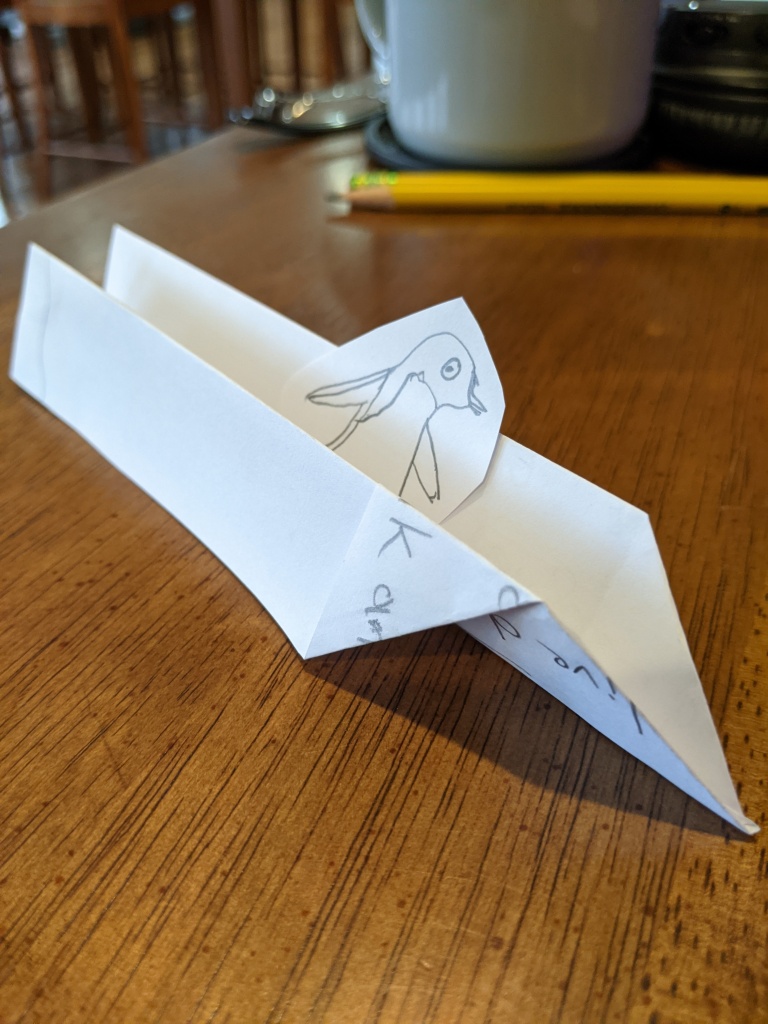
Have you ever seen your child write on their own? Children will write in play without support all the time, but as soon as you sit them down to write something they expect you to write it for them and/or tell them how to spell it. Why? The reason is the adults.
When children write on their own they go through a natural progression from scribble writing and random letters all the way to correct spelling. But, if adults tell children how to spell and/or that they are spelling words wrong then the child is afraid, cautious and concerned about doing it right. So, what can we do?
Teachers have learned that you can guide children through these writing stages without hampering their development. Wait what does that mean? Phonetic spelling, as known as inventive spelling or transitional spelling, is the process of writing words based on the phonetic sounds you hear in the word.
When children begin the process of phonetic spelling, they start by writing only the beginning sound. This is because it the the key sound you hear in a word. The next step is to add on the ending sound and later when they have mastered an understanding of more letter sounds and especially vowel sounds they will add in the medial sounds. For example, let’s pretend your child drew a picture of a house. When they begin the process of writing they may label the picture just with an “h”. As they gain more confidence in their own writing process they will naturally begin to add more sounds. Now they will write “hs” as house. Moving forward they may learn that “ow” says /ow/ and will write “hows”.
While none of these are the correct spelling they are steps towards getting the correct spelling. One concern that adults often bring up is that the child is learning it wrong. Let me dispel this myth, your child is not learning to spell the word, (s)he is learning the process of putting their thought on paper. At this point in the learning development, we are working on the concept of print has meaning and that you can put your thoughts down in words. Later as children learn more phonics skills and begin to see that words are spelled a specific way, they will master the correct spelling of words.
When teachers assist children in progressing through this process, the key is to sound out words slowly and teach children to stretch out words. We have them visualize the words on an elastic band. Pull the band slowly to stretch out the sounds. Write the sounds you hear. The key is to always go back to the whole word before you are finished. Here is another example: candle. Have your child stretch out the word c-an-d-l. When your child starts writing they will probably write “c” or “k”… either works. Then they may add in the “d” as this is a more dominant sound than the “l”. They will then progress to cndl as these are the consonant sounds you hear in the word candle. This is praised as they have progressed. If your child has learned “an” you can stretch it out and say do you hear the “an” sound in the word?
So why? Why do we want children to do through this progression? Well… a few reasons. One, they are writing. They are putting their own thoughts on paper. They are doing it their way and aren’t being told no that’s wrong. They aren’t ready to do it independently and in book spelling and won’t be for a few years. We want children to view themselves as writers and the earlier they write, the stronger this image will be.
Why else? When children make this natural progression of writing they actually develop stronger phonics and phonemic awareness skills. They need to use these skills to write on their own. They are not waiting to memorize and learn a new word or rule before they can write. If children had to memorize all the words they wanted to write before they began writing they would not get beyond sight words and simple cvc words until late in first grade. With transitional writing they can begin writing words as soon as they master their letter sounds.
So… what does this mean for parents. First if your child writes something that you can’t read it is OK! Ask your child to read it to you. “I see you labeled your picture, will you read the words to me?” “I noticed you wrote sentences to go with your illustration, I’d love to hear what you wrote.”
Next, if your child gets stuck on a word help them sound it out. It’s ok if it is not spelling exactly. In the classroom, I always talk about kid spelling (or kindergarten/preK spelling) verses book spelling. I do not expect the children to write in book spelling, but this addresses the fact that there is a correct way to write something, but since they are in K, preK are kids whatever, it’s ok to write it their own way.
Finally, if you are working with your child to sound out a word and they spell it correctly… tell them. Look you wrote that in book spelling. This will begin to solidify the correct spelling and that they can transition from phonetic spelling to book spelling. Just remember to praise their effort to use phonetic spelling too or else they will revert to depending on you for all the book spelling!











